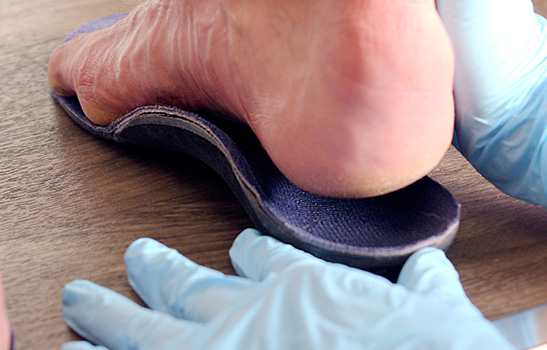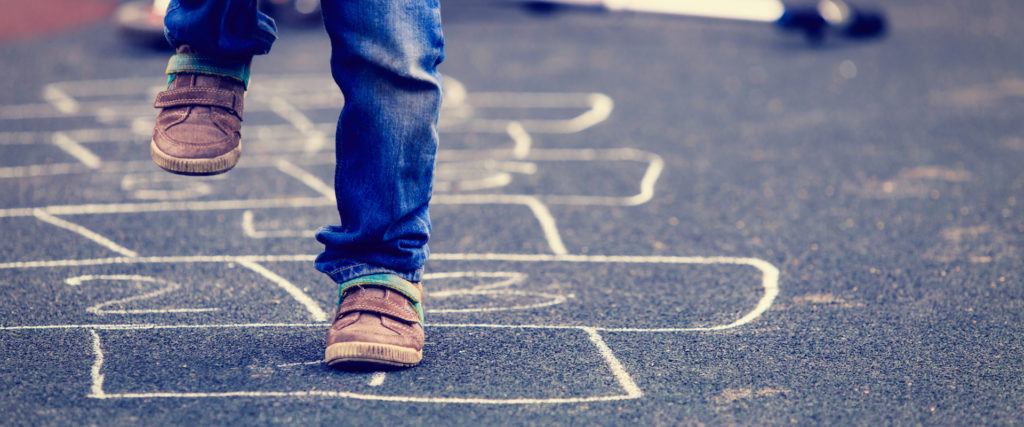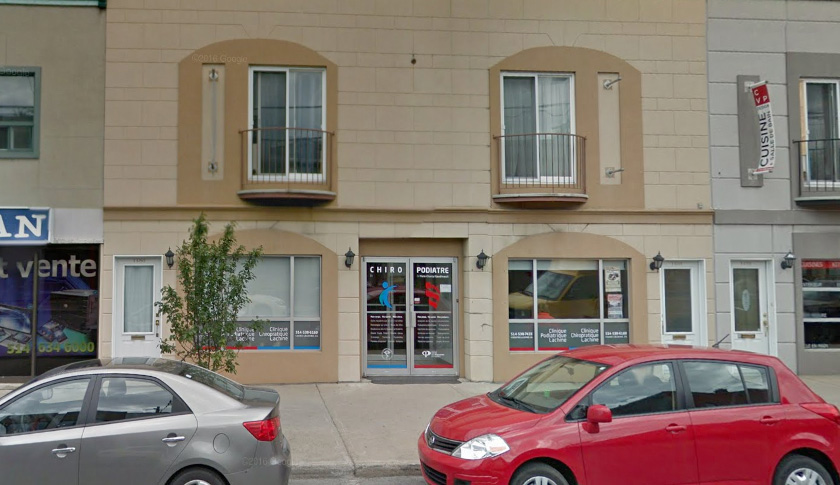Calcaneal apophysitis (Sever’s disease)
Sever’s disease is a frequent cause of heel pain in children. The condition is characterized by inflammation of the growth plate in the heel bone (calcaneus) and typically occurs in late childhood or in adolescence. Young athletes are particularly susceptible, especially those who play sports that involve a lot of running, like soccer, football or basketball.
See the causes See the long term complications See how to relieve yourself at home
Signs and symptoms of Sever’s disease
- Pain behind and/or underneath the heel
- Pain worsens during and/or following sports activities
- Sensation of pressure or tension behind the heel
- Difficulty landing the heel of the ground
- Pain can become more and more constant over the course of the day
- The child may be reluctant to participate in gym class
- Pain sometimes appears when the child takes their first steps in the morning or after a long period of rest
- Both heels can be simultaneously affected
What is the cause of Sever’s disease
Roughly between the ages of 6 and 16, the heel bone is separated into two parts by a soft cartilaginous growth plate (secondary ossification centre). This tissue is located at back of the heel and is the Achilles tendon’s insertion. The bottom part of the heel growth plate serves as the attachment of the plantar fascia (the most important ligament of the plantar arch). In Sever’s disease, the Achilles tendon and plantar fascia both pull on the heel as if engaging in a tug of war.
When excessive tension and stress occur at the junction of the two bony portions of the heel, the growth plate experiences inflammation and symptoms associated with Sever’s disease may emerge. Thus, any condition that causes excessive stretching of either the Achilles tendon or the plantar fascia can trigger Sever’s disease. Excessive tension at this site can often be attributed to poor foot mechanics, or structural problems of the feet that lead to faulty movement or abnormal gait.
Such problems include:
- Flat feet and hyperpronation
- Fallen arches
- High arches
- Bunions (hallux valgus) and dysfunction of the big toe
- Lack of flexibility in the calf muscles (clubfoot)
- Short Achilles tendon
- Joint hypermobility (excess of flexibility in the foot)
- Leg-length discrepancy
- “Tiptoeing”
- And many others
Sever’s disease can also develop as a result of injury. For example :
- Important impact of the heel due to a fall, etc.
- Bad landing upon jumping
- Direct impact on the heel
Aggravating factors :
- Improper exercise technique
- Overtraining
- Sports that involve a lot of running, sharp turns or jumping
- Unsuitable footwear
- Being overweight
- Rapid growth spurts
Progression and consequences of Sever’s disease
The pain caused by the inflammation of the growth plate may initially be intermittent and only arise during physical activity.
However, if the condition remains untreated, pain may start appearing upon walking or arise whenever the child applies weight to the affected foot. In fact, the condition can become so painful that the child’s movement may be severely restricted. In some cases, it may even hurt to place the heel on the floor. The child is therefore forced to avoid all sports activities. The symptoms of Sever’s disease may become recurring, with flare-ups occurring at intervals. The condition can persist until the growth plate fuses into the bone, which typically occurs between the ages of 13 and 16.
Finally, if the cause of the problem isn’t addressed, the condition can evolve into Achilles tendinitis or plantar fasciitis.
How to relieve pain from Sever’s disease at home
There are three aspects to treating Sever’s disease:
1. Rest :
- Depending on the severity of the condition, the child may need to temporary reduce or stop all sports activities.
- Silicone heel cups may be placed inside shoes.
2. Treating the inflammation :
- Apply ice to the painful area 10-15 minutes every evening and throughout the day as needed.
- Apply ice immediately after sports activities.
3. Stretching exercises :
- The child can loosen their plantar fascia by rolling a tennis ball under their foot for 5-10 minutes.
- The child should stretch their calves every morning and evening. The stretch can be performed against a wall or step. The stretch should be held for 30 seconds and repeated 2 or 3 times.
Diagnostic of Calcaneal apophysitis (Sever’s disease)
– To identify whether poor foot alignment or posture may be at fault, a thorough biomechanical exam is essential. All too often, this aspect is neglected and the problem becomes recurrent or debilitating. With the help of pressure sensors connected to cameras, the biomechanical exam makes it possible to evaluate the function of the child’s feet, their posture and their gait. Find out more.
– X-rays must be conducted to rule out other causes of heel pain and to assess the integrity of the cartilaginous growth plate. X-rays also make it possible to verify the alignment and normal growth of the bones in the foot.
What can my podiatrist do about Sever’s disease?
Once the patient’s condition has been evaluated and the Sever’s disease diagnosis confirmed, the podiatrist will be able to recommend an appropriate treatment plan.
Some solutions include:
1. Plantar orthotics :
- Plantar orthotics are necessary when biomechanical factors are at fault. These devices optimize the child’s foot mechanics and reduce excessive tension at the growth plate caused by the plantar fascia and the Achilles tendon. Plantar orthotics speed up healing, help prevent recurrence and facilitate the continuation of sports activities.
2. Physical therapy :
- Taping: Therapeutic tape is used on the foot and leg to temporarily relieve tension at the growth plate caused by the plantar fascia and the Achilles tendon.
- Manipulative therapy: Gently mobilizes the bones and joints of the foot to help them realign and to reduce swelling.
3. Stretching exercises :
- The podiatrist may recommend specific exercises to help improve the patient’s condition.
How to prevent Sever’s disease?
- If the child already wears prescribed orthotics, it’s important that they continue wearing them daily for preventive purposes.
- Take action at the first sign of pain to prevent long-term problems (See “Treating the condition at home”).
- The child should warm up well before doing physical exercise.
- After exercising, it’s important to stretch the calves and the backs of the legs.
- Children should vary their sports activities.
- Schedule rest days.
- Avoid shoes that are very flat and lack cushioning at the heel.
They're just growing pains. It'll pass!

As explained, the pain is actually caused by real inflammation in the growth plate and it shouldn't be ignored!
And if it was not Sever’s disease?
- Other conditions with similar symptoms include:
- Plantar fasciitis
- Achilles tendinitis
- Infracalcaneal bursitis
- Avulsion fracture of the plantar plate
- Calcaneus stress fracture
- Bone tumour in the heel bone
- Baxter’s neuritis (irritation of a nerve under the foot)
- Panniculitis (inflammation of the fatty layer under the heel)
- Systemic disease (e.g., juvenile rheumatoid arthritis)


